Homes are a safe place for both people and bugs in the winter. There are a few bugs that can survive a few weeks and even a few months indoors in the winter.
While rare, some species live throughout the year indoors without an adaptation for outdoor wintertime survival.
Table of Contents
What Do Bugs Do in Winter?
Bugs prefer to hide in the winter. Ants go deep in the ground where they’re mostly inactive and feed below the surface levels. Other bugs hide under rocks or logs where they remain inactive.
Bugs enter diapause in the winter
Diapause is a state of survival of bugs similar to hibernation. Low to no activity levels are specific to this state.
Most bugs enter diapause once they find a safe place to overwinter, be it outside or inside of the house.
Ladybugs are an example species that moves indoors and enters diapause. High numbers of ladybugs can seek out shelter in the house.
Basements and attics are common non-disturbed areas of the house for bug diapause.
Many bugs die in the winter
A high percentage of bugs and insects die in the winter. Most start to die before freezing temperatures arrive.
Bugs don’t survive consecutive freezing temperature days as they die or enter diapause.
House bugs can survive winters as adults, larvae, or eggs
Species hiding or living in the house survive winters awaiting spring or being active.
House centipedes are a species that remains active indoors throughout the year.
Some types of beetles seeking refuge indoors for food or shelter are also known for surviving and even multiplying indoors.
Rice weevils are an example species that survives and thrives indoors, especially when it has unrestricted access to food.
Bugs migrate before winter arrives
Millipedes are among the species that migrate just before winter arrives. These bugs are known for seeking sheltered areas where they can hide during the winter.
Most species of bugs only migrate over short distances compared to the long-distance migration of other species such as moths and butterflies.
Bugs You May Encounter In Winter
The following species of bugs can be seen indoors or even outdoors in the winter.
1. Ants
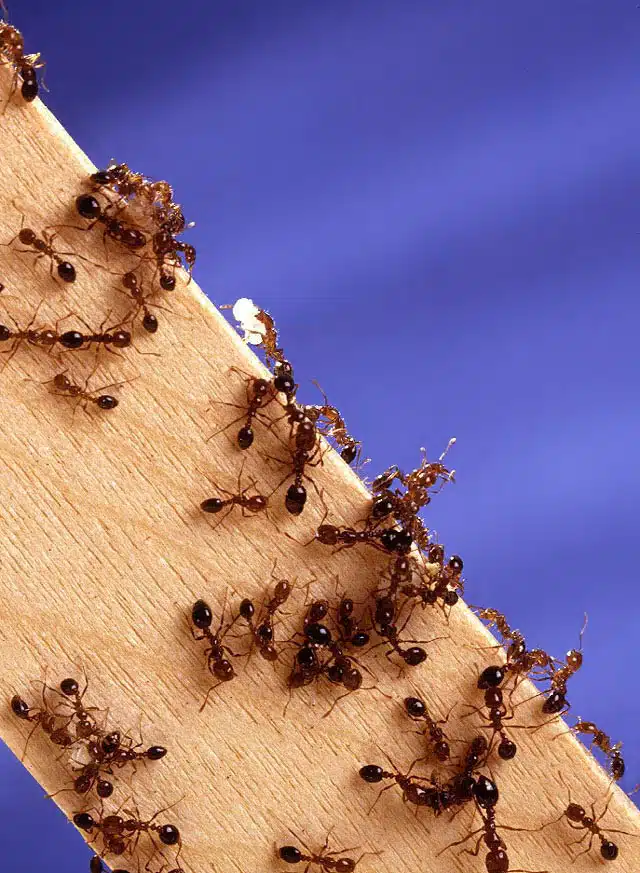
Ants are known for living in nests of up to a few thousand members. They can be seen in the spring and summer months around the house, in woodlands, in deserts, or next to water sources.
Ants may decide to seek shelter in the winter months, some of them even moving indoors, particularly to basements.
Homes with basements are among the first to be considered by ants. Basements sit below the freezing line in the ground which means they protect ants from extreme temperatures.
Ants might first move into the house at ground level and then make their way to the basement whenever you set up traps or use chemicals against them.
Ants may also enter basements without a concrete foundation as they can dig into the ground.
A depth of up to 3-4 feet is specific to ants looking to hide from freezing temperatures.
Ants might also dig into the ground next to the house and end up in the basement when fleeing outdoor freezing temperatures.
Ants might also enter a hibernation status once they’ve found a good place to retreat during the winter.
It might take up to a few weeks for ants to snap back once spring and warm weather have arrived.
Ant colonies revolve around queen ants. Most queen ants are flanked by worker ants for warmth during the winter.
2. Beetles
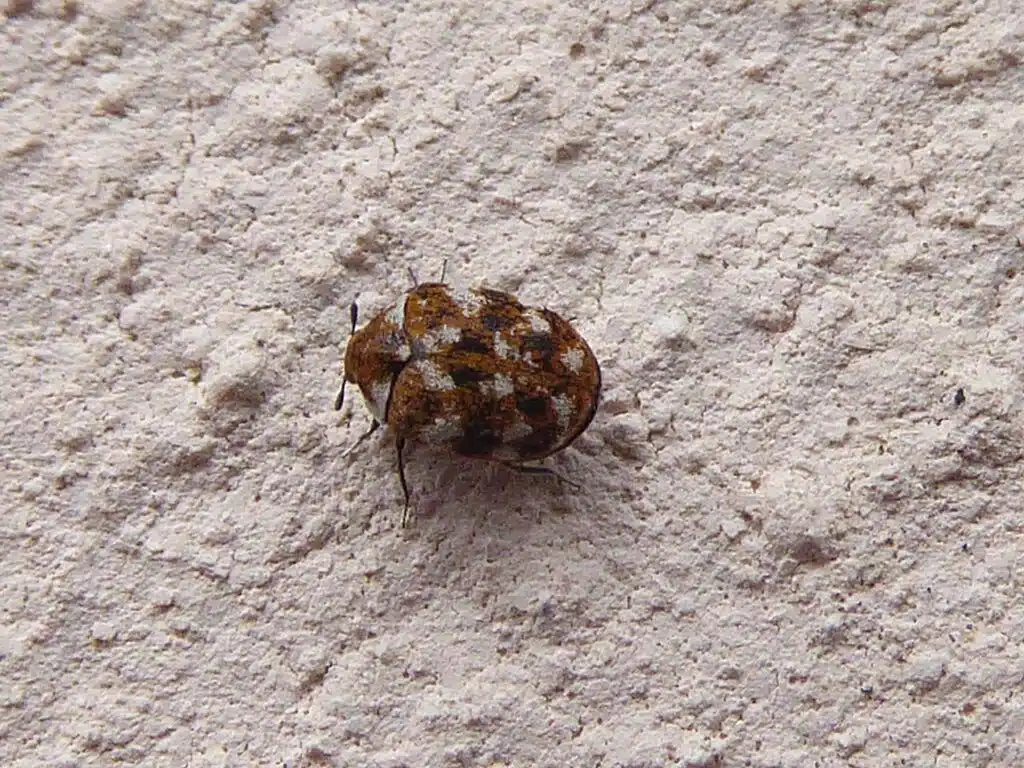
Beetles typically die in the winter. Others can survive up to 3 years both inside of the house as well as outside of the house.
Carpet beetles are among the most common species that remain active in the winter by moving indoors.
Food and shelter are among the main reasons carpet beetles move inside in the cold months.
They consume many types of animal-origin fibers such as natural fiber carpets, as their name implies.
Carpet beetles don’t die indoors unless the home is also constantly seeing freezing temperatures, which is not the case with inhabited homes.
Rice weevils are common beetles living and thriving in pantries. As their name implies, they can eat all types of dried long-shelf life food in the pantry.
From pasta to rice, or from flour to oats, these bugs can feed on different types of foods in the house.
They can chew their way through paper packaging to get to the food.
You might even be seeing increasing numbers of rice weevils in the pantry in the winter unless all of your food is stored in plastic and or glass containers.
3. Ladybugs
Ladybugs are some of the most common types of bugs invading homes in late fall and winter.
It takes a few days of cool weather in the fall for ladybugs to start searching for a sheltered place to overwinter.
The first populations of ladybugs are seen in homes in high numbers in the fall.
These types of bugs enter diapause once indoors. This is a state of slow or non-existent growth, similar to hibernation.
Ladybugs typically invade homes in their tens or hundreds at a time. They have been shown to prefer buildings with sun exposure.
Other ladybugs migrate to warmer places to escape cold weather. They prefer Southern US territories.
4. Silverfish
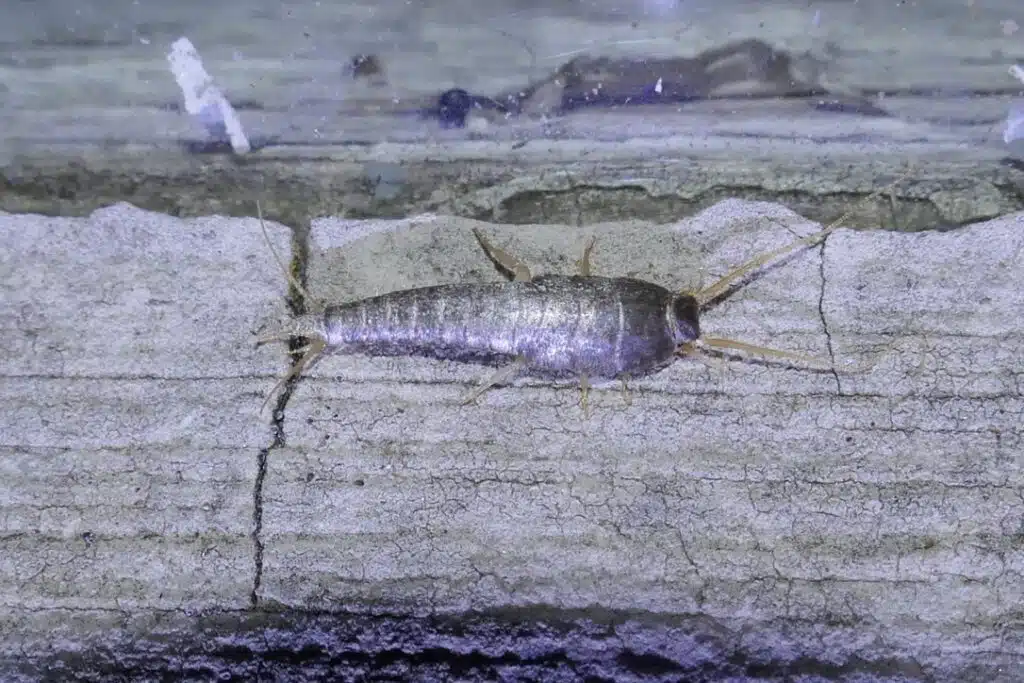
Silverfish may enter diapause or they might remain active in the winter, depending on their location.
Most prefer to seek shelter and they might find a warm humid home to live in.
Otherwise, silverfish remain active close to freezing temperatures, which means they might remain active outdoors.
Silverfish remain active whenever they find an inhabited home to establish in.
They can live in basements or bathrooms, areas with plenty of humidity that never see freezing temperatures.
Silverfish can even multiply in the winter so it’s best to take action against them as these bugs are not going to be willing to get out of the house.
Plenty of food is also keeping silverfish indoors.
These bugs can eat all types of foods such as plants, cornmeal, flour, and even paper. They can survive on these foods and begin mating based on these foods.
Since they can even eat wallpaper, eliminating their foods to deter them from the house isn’t possible.
It’s best to seal all entry points to keep them out for the winter.
5. Cockroaches
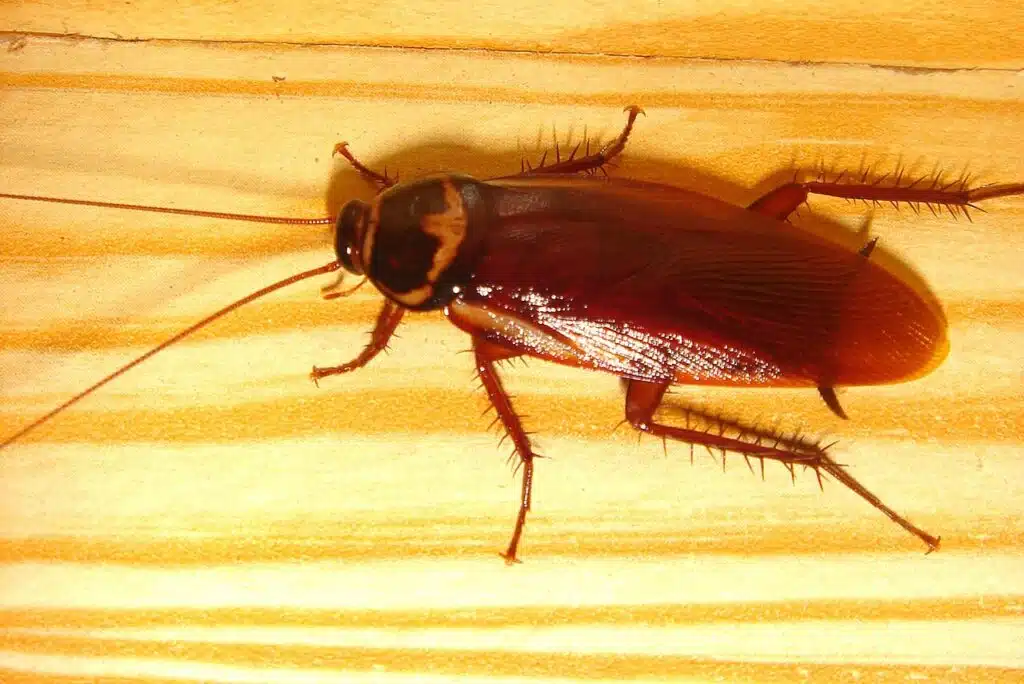
Cockroaches are some of the best bugs at finding warm places to escape to in the winter.
Many types of cockroaches die sooner than seeing freezing temperatures. They can die as soon as temperatures are at or below 45°.
It only takes a few hours of exposure to these temperatures for cockroaches to die.
This is why roaches move indoors as soon as fall arrives.
While indoors, cockroaches survive winters if they have food to rely on.
However, their habits are impacted by low temperatures.
German cockroaches will reduce mating rates in the winter, even if indoors.
While their reproduction rate slows down, these roaches are still able to grow colonies if left unattended.
Some exterminators use freezing temperatures as control measures.
A room with open windows and doors will eventually reach freezing temperatures if the outdoor temperatures are also below the freezing line.
This means cockroaches might never truly die when they live indoors in inhabited places.
6. Spiders
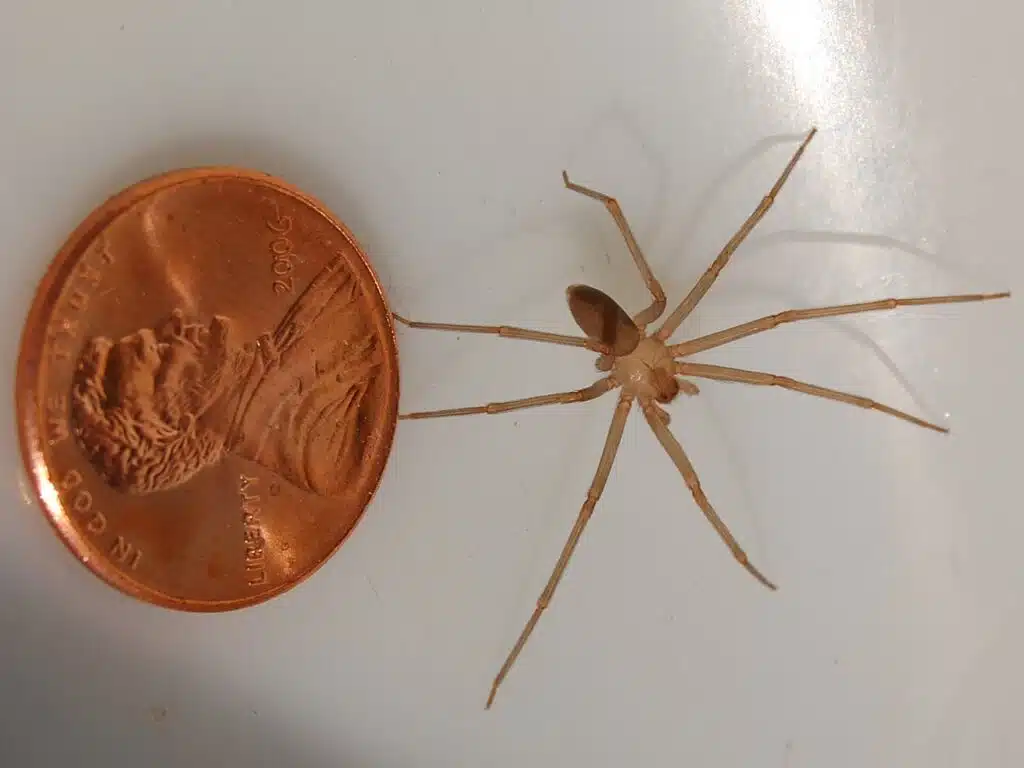
Only a small percentage of spiders move indoors during the winter. Some of them can go unnoticed.
The Brown Recluse is one of the spiders that seeks indoor wintertime shelter.
Spiders of this genus prefer attics, basements, and other dark areas of the house that don’t get too much attention from humans.
They rarely move into inhabited rooms of the house which is why they can go unnoticed.
Spiders can also survive in the basement, garages, or even outdoors next to the house in the winter.
They can live under piles of leaves or behind firewood or logs.
A state of diapause is characteristic of spiders in the winter.
They remain inactive for much of the time, without actually dying. Some spiders might still come out for food on warmer winter days.
7. Ticks
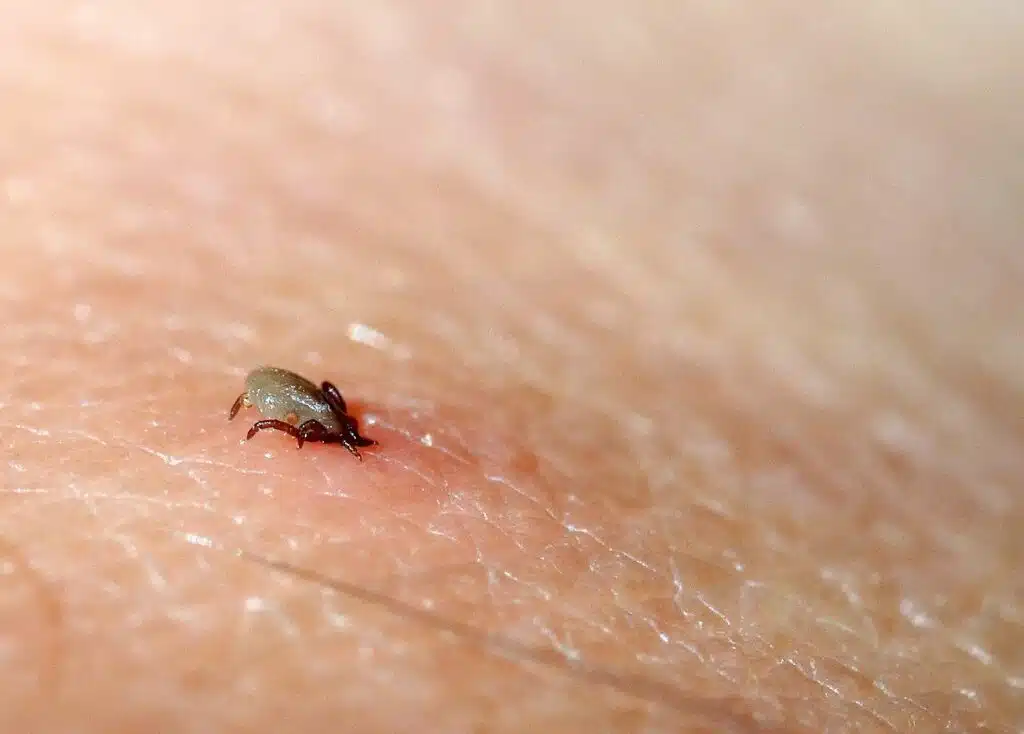
Ticks aren’t necessarily moving indoors in the winter but they don’t die in cold weather either.
They have a couple of options. They can either hide under debris and leaves or they can attach themselves to a host such as a pet or other animals for winter.
Ticks enter a dormant state in the winter in these conditions but they don’t die.
As spiders, ticks might be slightly active for brief periods on the warmer winter days when they can move from vegetation to a mammal host.
You may encounter ticks around the house, in the woodlands, or even in public parks in the winter.
Many ticks are found on animals in the winter.
Ticks that don’t attach themselves to a host in the winter might only truly die or remain hidden once the ground is covered by snow.
They remain active, even if to a lesser extent in the winter.
8. Stink Bugs
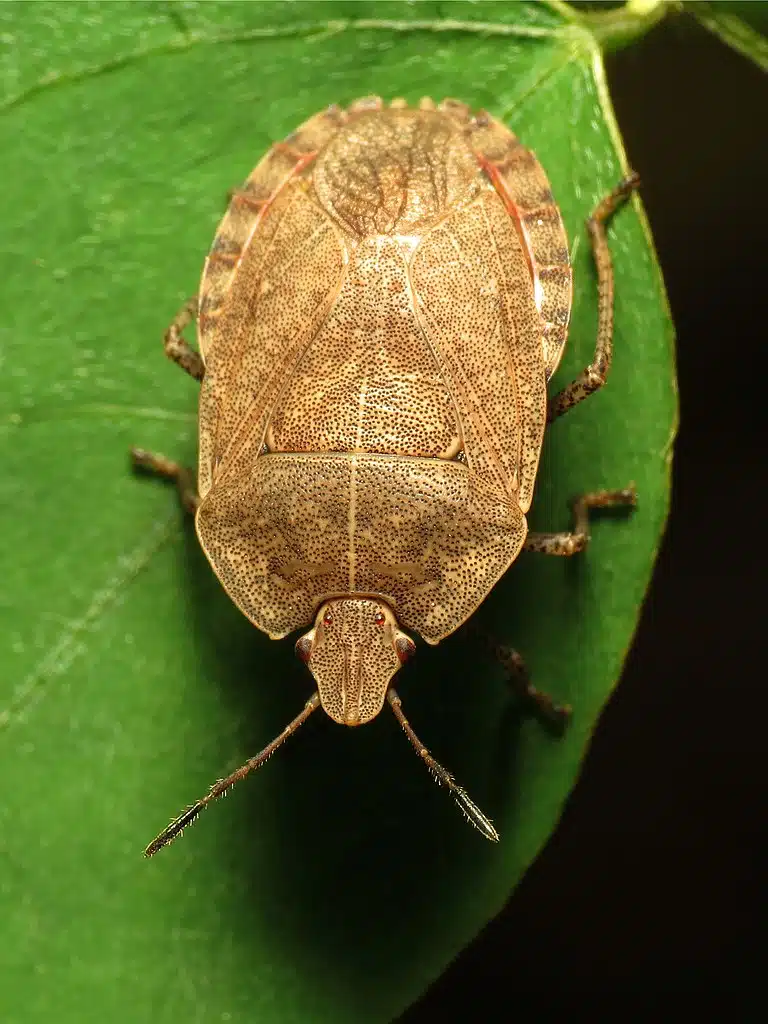
Stink bugs are known to enter homes in the fall as they don’t die in the winter, they enter diapause.
These bugs are not easily seen around the house in the winter as they prefer sheltered areas of the house for diapause.
This might be the space between walls or areas of the home without any activity such as the attic.
Stink bugs create no issues in homes in the winter as they don’t feed or multiply.
While not dead, stink bugs in diapause are only marginally aware of their situations remaining mostly inactive. They might even appear dead at a first glance.
One of the reasons people consider them pests is because they leave a sticky residue behind.
This is only the case when you startle the bugs in the house, once you find them indoors in the winter.
9. Boxelder bugs
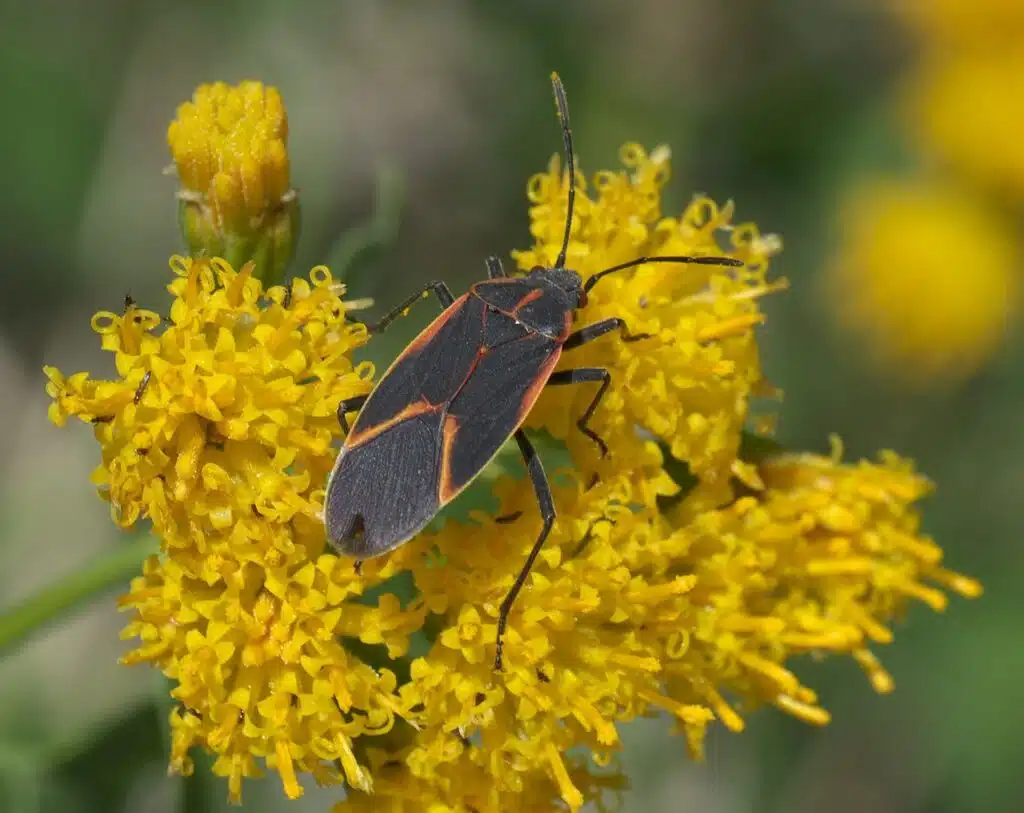
Boxelder bugs spend much of their time feeding on leaves and seeds.
These bugs start moving indoors in the winter.
Only a small percentage of the bugs make it indoors as the species can also overwinter outdoors, under piles of leaves or in other sheltered areas.
A state of diapause is characteristic of the species which doesn’t show much interest in pursuing typical activities during the winter.
These bugs remain inactive in the winter only moving around on warm days.
They can remain inactive indoors even in the winter if there’s no plant matter for them to eat.
10. Western Conifer Seed Bugs
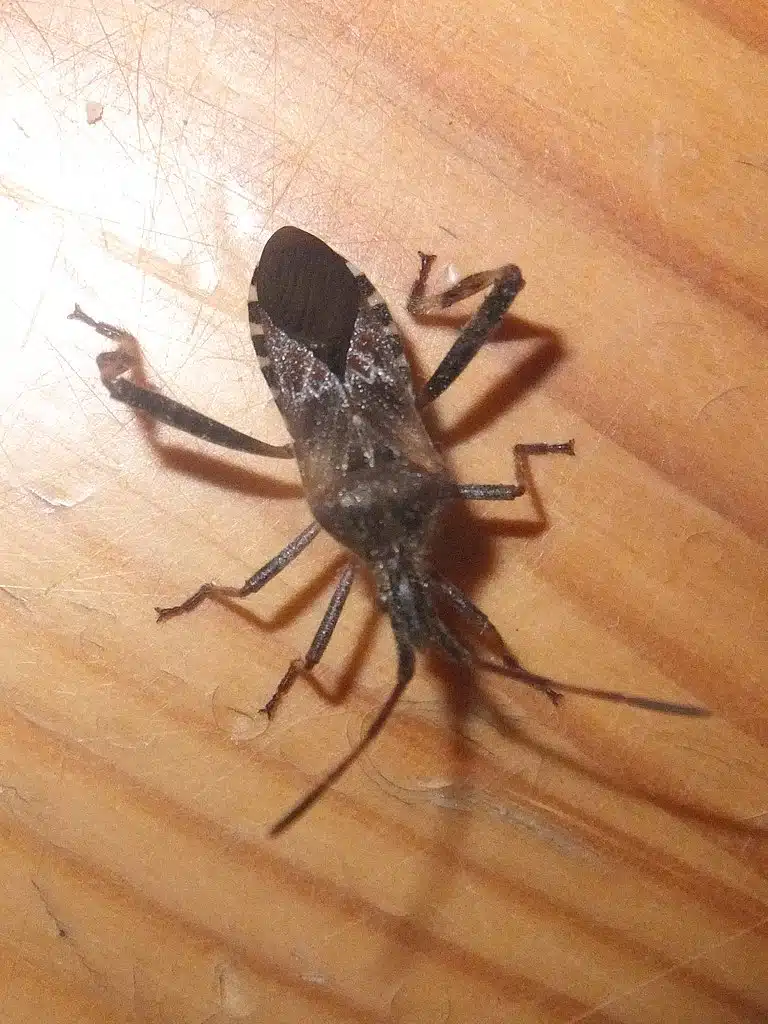
Feeding on conifers, Western Conifer Seed Bugs are among the species that make it indoors in the winter.
These bugs are known for seeking out parts of the house where they can’t be disturbed by humans or pets.
Attics and basements are their favorite hiding places until spring arrives.
Bugs of this genus might not feed at all during the winter months spent hiding indoors.
You might first confuse Western Conifer Seed Bugs in the house with stink bugs as both have a similar shield-like shape.
You can spot these bugs early before moving indoors on the outer walls of the house, especially those on sunny sides of the home.
11. Leaf-footed Bugs
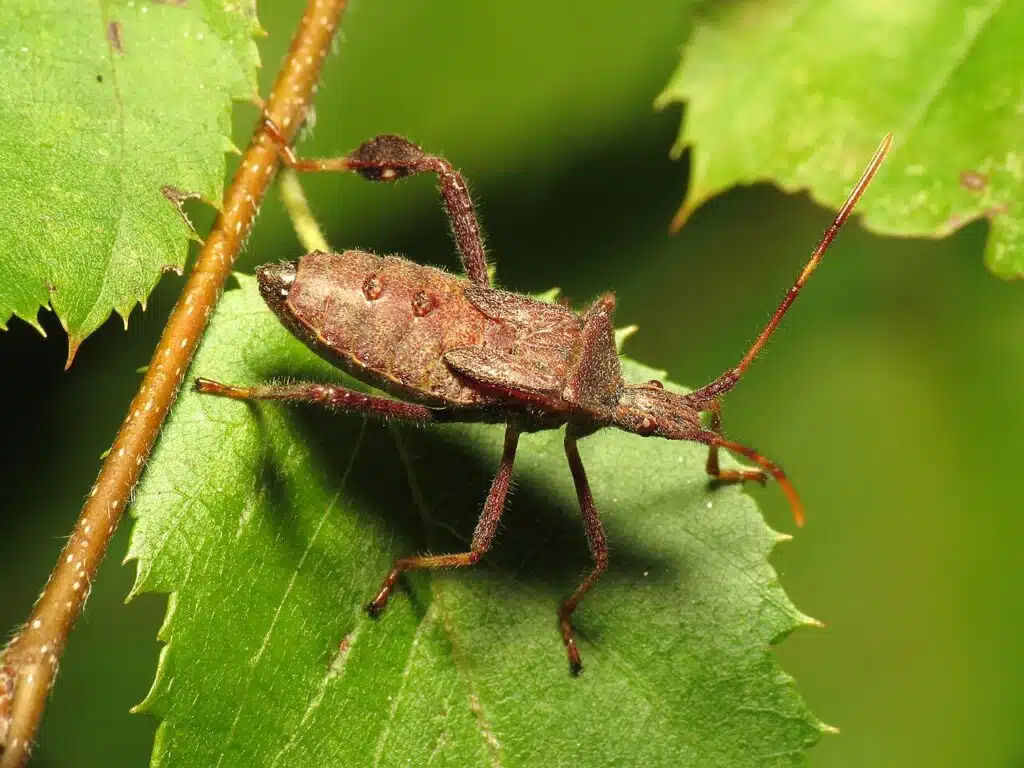
These large shield-shaped bugs seek out a hiding spot during the winter.
Mid-fall is the time when the first leaf-footed bugs seek out a place to overwinter.
This is typically a pile of leaves, wood, or another type of sheltering object.
Leaf-footed bugs are among the most common species to be found indoors as they can also overwinter inside the house.
As other species make it indoors, Leaf-footed bugs are found in high numbers together.
They can remain inactive in the same spot from fall to spring.
These bugs might only start to become active again in the spring.
The first days of warm weather in late spring make these bugs come out of diapause to seek food and mate.
12. Bed Bugs
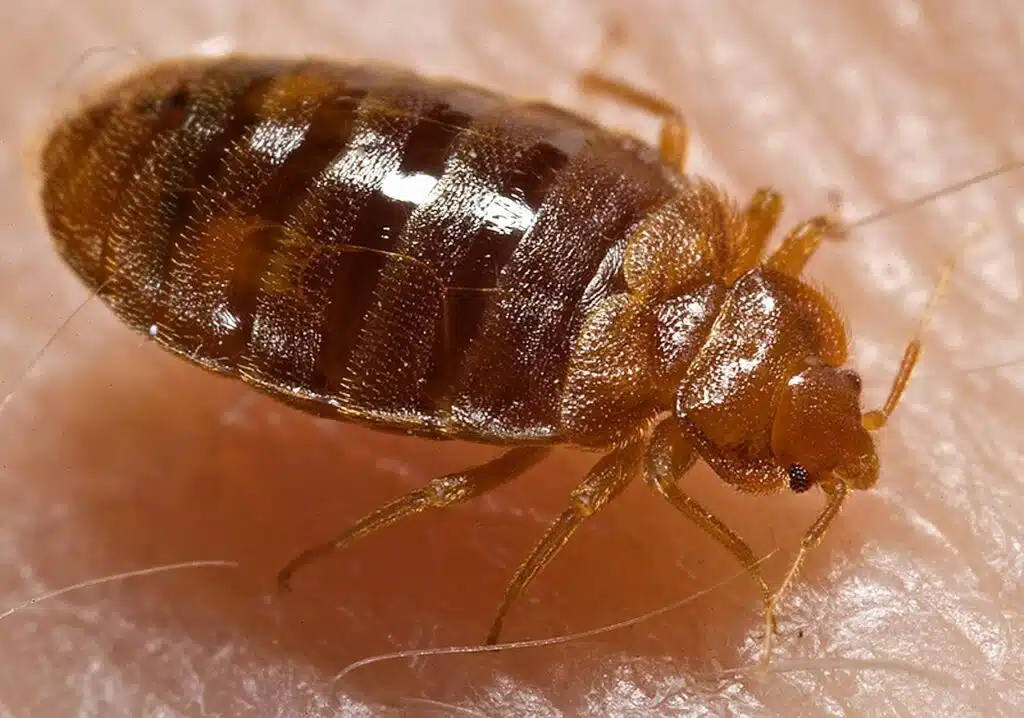
Bed bugs rarely enter diapause when living indoors in the winter. They continue feeding and having an active life indoors.
A human host providing blood for the species can be the ideal situation for the bugs in the winter.
Bed bugs only die when exposed to freezing temperatures.
The warm space indoors means they can live and multiply freely in the house.
Not all bed bugs are the same and some bugs might enter diapause when the indoor temperature is cold, particularly in rooms without heating.
These types of bugs can spread from one house to another by clothes and a host even in the winter.
Clothes or luggage you’ve carried to your home from a bed bugs-infested home can mean these bugs spread their territory even in the winter.
13. Fleas
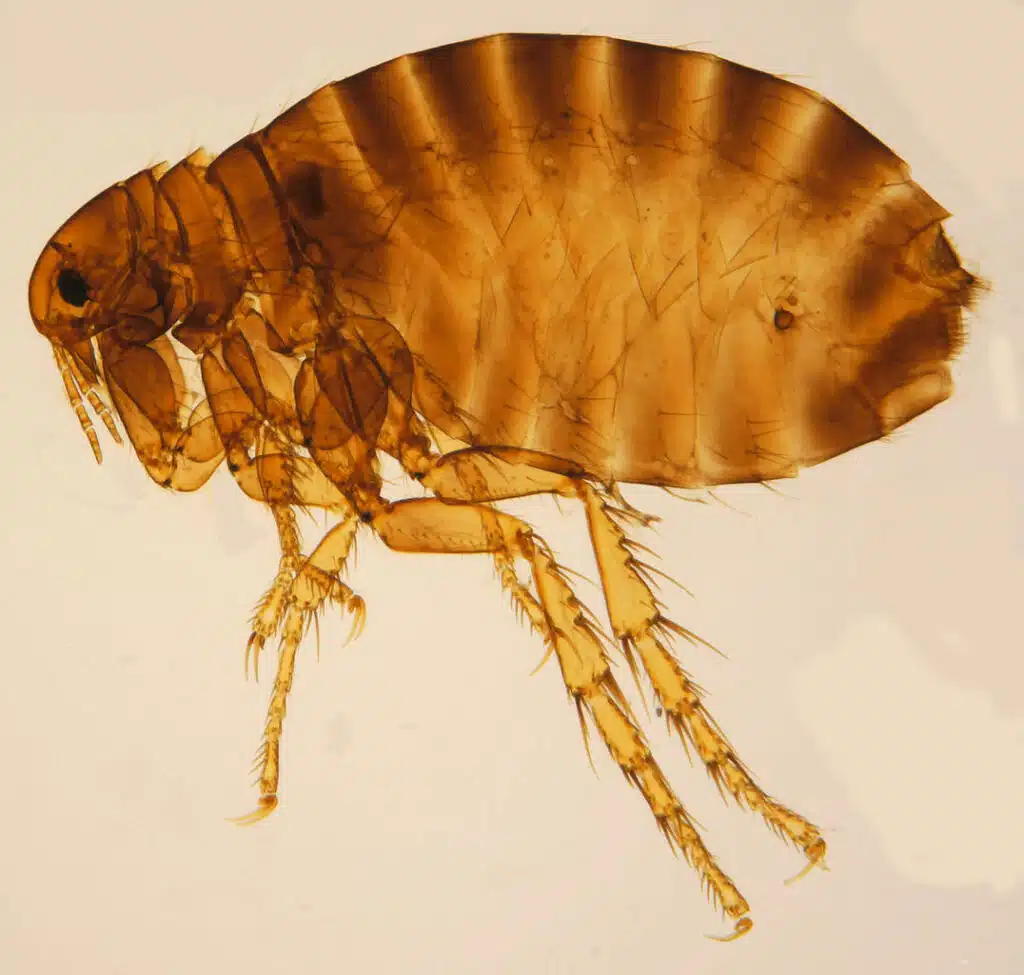
Fleas only die when outdoors in the winter. Freezing temperatures eventually kill fleas.
These biting bugs can survive indoors, especially once female fleas have laid eggs.
Up to a few thousand eggs are laid at once indoors once fleas make it into the house. This means that even a low hatching percentage is still responsible for a high number of fleas indoors.
The survival of fleas indoors depends on finding a suitable host, typically a pet.
Fleas might still show some signs of slowing down activity levels, even when surviving indoors.
This involves a slower hatching time for the eggs as well as a reduced activity level for adults.
Fleas need a minimum 70 °F temperature to start reproducing. They would not multiply in basements or attics, areas with lower temperatures.
14. Mosquitoes
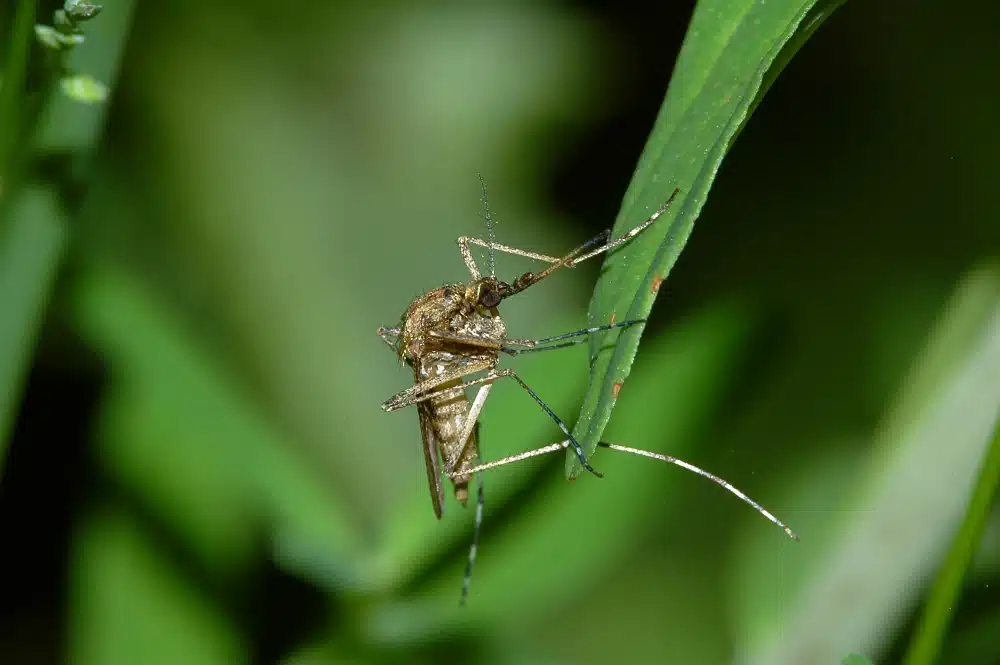
Mosquitoes can survive winters indoors for up to a few weeks.
Eggs are laid indoors and mosquitoes can survive into the winter, especially if there are indoor areas with high humidity for them to lay eggs in before winter settles.
Mosquitoes eventually die before winter ends, even indoors.
Still, they lay eggs which remain active until warm weather comes back. Overwintering mosquito eggs can hatch in the spring or summer, whenever warm temperatures return.
15. Flies
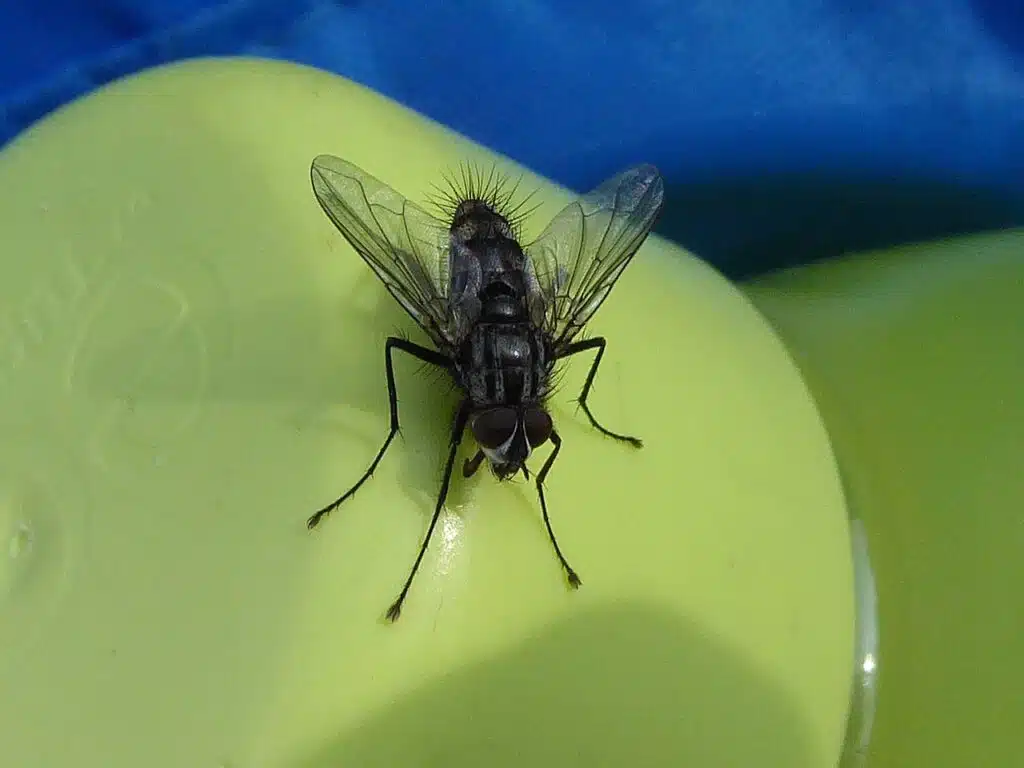
Flies begin dying soon before winter settles in.
This can be seen in the fall when flies have reduced numbers, lower activity levels, and lower reproduction rates.
Flies might survive indoors after the first frost but they cannot reproduce properly in the house in cold temperatures.
Eventually, even indoor flies die within 3-4 weeks in cold weather.
Some of the last signs of flies in the winter can be found in the garbage bin or other areas where you might have fermenting food.
Almost all flies retreat to the last place with suitable food in cold weather indoors.
16. Winter Firefly
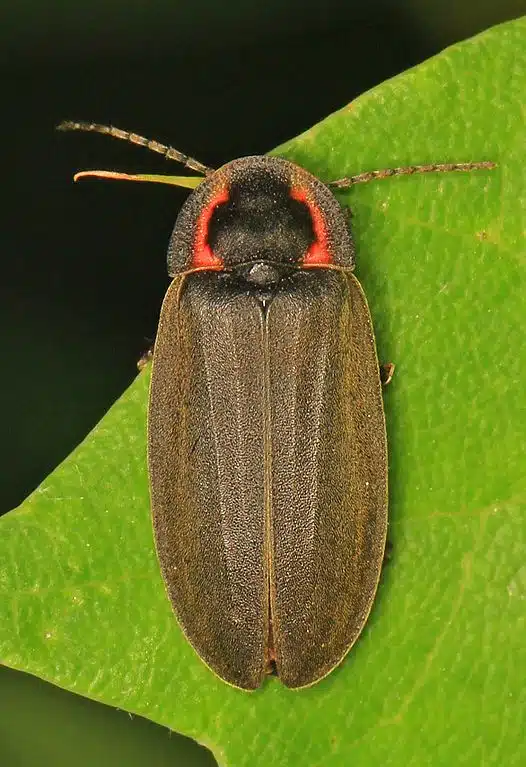
Winter Fireflies (Ellychnia corrusca) are among the few insects surviving winters outdoors.
You might find these insects making it indoors as well.
Most sightings are on sunny sides of trees, where these insects are seen in mid to late winter.
Winter Fireflies aren’t active throughout the winter but they become active in February, regardless of the freezing status of the weather.
A single warmer day is sufficient for these insects to become active in February.
This means they can be seen on snow, a rare sight in the world of insects which is mostly dormant whenever the earth is covered in snow.
17. Springtails
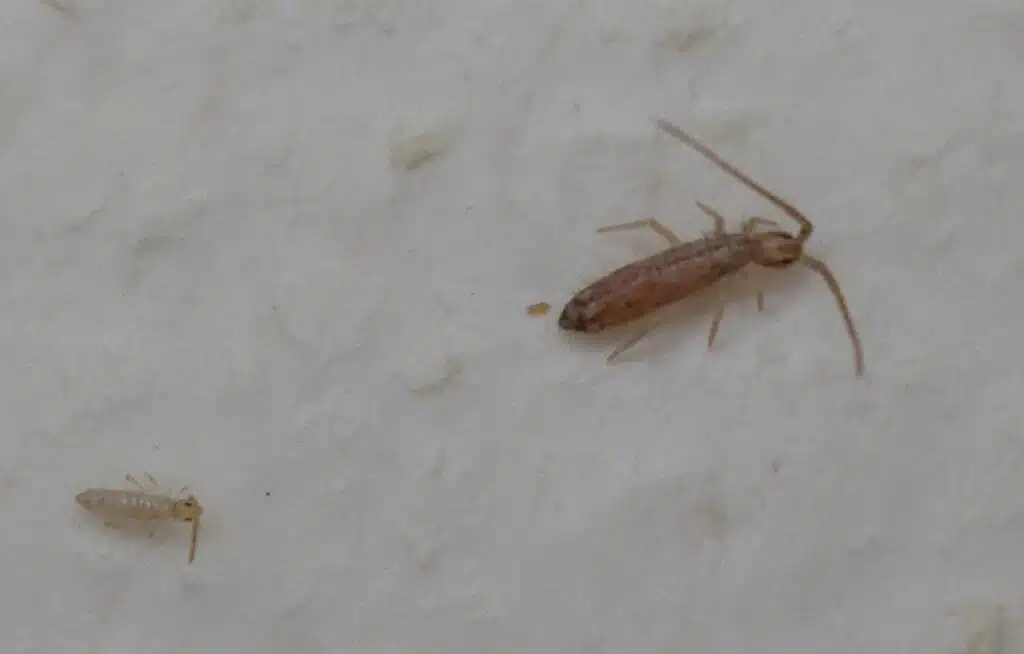
Springtails are also known as Snow fleas. This species is primitive and it can only detect light and darkness with its basic vision.
Springtails still manage to come out of their hiding spots and climb up the snow on sunny winter days.
These wingless insects are known to love the warmth of the sun, even on the coldest winter days when they are seen in the snow.
You can barely distinguish springtails from black debris on snow, given their reduced size.
These bugs feed on fungi, algae, and decaying organic material. They reduce their feeding habits in the winter, but they remain active, even if at a lesser pace.
Springtails can also move indoors in the winter. They might seek places such as mulch to hide under or move indoors if there’s warmth and humidity to count on.
18. Millipedes
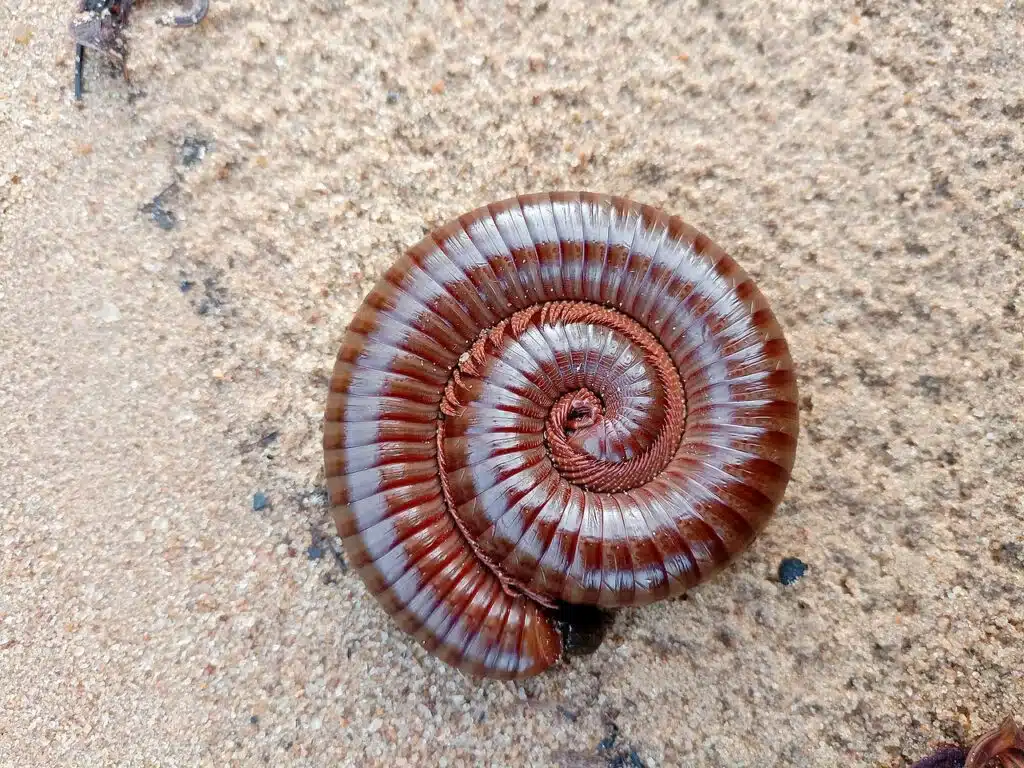
Millipedes are some of the smallest bugs that may be found indoors in the winter.
Any sightings of these bugs are purely accidental as millipedes don’t like to be indoors.
These invertebrates migrate in the spring and late fall, as the temperature starts to drop.
Seeking a hiding spot, millipedes are primarily interested in moist areas under logs or rocks.
All millipedes overwinter as adults. The species only lay eggs in warm weather.
Millipedes are known to be among the bugs that survive multiple winters.
Some species of millipedes live up to 4-6 years.
19. Centipedes
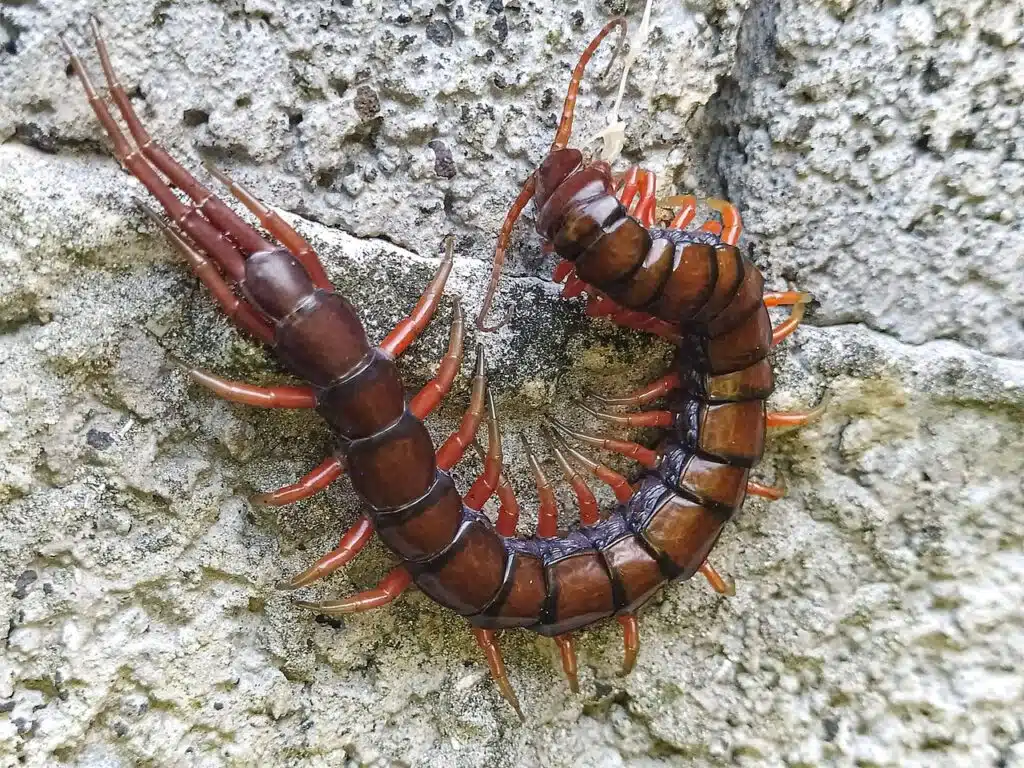
Centipedes don’t survive winters outdoors.
House centipedes are among the bugs most likely to live freely indoors, even during the winter months.
These types of predators seek out spiders, roaches, and even bed bugs as food in the winter, around the house.
Most house centipedes aren’t easily visible.
These bugs are nocturnal and they avoid coming out of their hiding spots during the day.
It’s at night that they come out seeking any type of bug or insect surviving winters indoors.
House centipedes die immediately if they wander out of the house in freezing temperatures.
How to Prevent Bugs Invade Your House In Winter
Bugs may be actively looking to get indoors just before winter arrives.
Ensuring they have no entry points is important when it comes to keeping them out. Managing foods and humidity are also crucial deterring elements.
Many bugs get indoors with a host such as when carried by humans or pets. Here’s what to do to keep them out.
Seal all cracks and wall gaps
Bugs love to crawl through tight spaces. They use even the smallest openings to make their way indoors.
Some bugs also use small cracks in walls and around doors or windows to move within the house, mainly to an unrestricted area.
Flying bugs tend to settle in a space or room they can easily get out of while crawling bugs might get into any room of the house to overwinter.
Ladybugs are known to love attics, together with stink bugs. Attic access is easy through roof cracks and openings.
Spiders crawl into the ground floor or basements, easily moving around the house, mainly at night.
Store long-shelf-life food in plastic containers
Food is among the first reasons bugs stay indoors in the first place. Bugs that feed on dry foods are always found in the pantry or other areas of the house with dry food.
They even lay eggs on food which means you need to properly store long shelf-life food. Using plastic or glass containers is among the first steps to keep them out.
Bug food can be a wider spectrum than just food humans eat. You should also manage mold as fungi can be a type of bug food for little crawlers in the winter.
Handle water leaks and high humidity levels
Humidity levels and leaks might offer a safe space for bugs in the winter. Dry cold outdoor air might drive them indoors where they get warmth and the humidity they need.
Water leaks and poor ventilation are sometimes overlooked in the winter as windows and doors are kept shut to trap warm air.
This can lead to higher humidity and mold problems in the winter.
Reducing indoor humidity requires ventilation and frequently opening doors and windows are still recommended, even in the winter.
Cleaning should always go hand in hand with fresh indoor air.
Vacuum and clean the house regularly
Vacuuming is one of the easiest methods to eliminate all types of overwintering bugs.
You can expect to vacuum many types of bugs easily. Stink bugs should be easier to vacuum as they reduce activity levels during the winter almost completely.
The most difficult part is finding the areas of the house that don t get frequently vacuumed as these are the areas most bugs are found in.
Corners in the basement and the attic might be true hiding spots for wintertime bugs. These areas also need to be frequently vacuumed and cleaned to prevent other bugs indoors.
Check firewood
Many types of bugs get in the house by a carrier product, a host, or by attaching themselves to a plant or food.
Firewood is one of the most typical types of wintertime bug carriers. Many bugs such as spiders, millipedes, and cockroaches might be hiding underneath firewood stored outdoors.
These bugs might accidentally make it indoors. It’s best to check for signs of bugs on logs and firewood before bringing this type of solid fuel indoors.
Summary
While many bugs die in the winter there are a few species that survive even freezing conditions.
Finding a suitable overwintering spot is a priority for bugs as temperatures start to drop in the fall.
From stink bugs to ladybugs, various species can call your home a safe overwintering spot.
Beetles such as rice weevils might even see your home as a great place to eat and mate regardless of the season due to food availability and sufficient constant warmth.